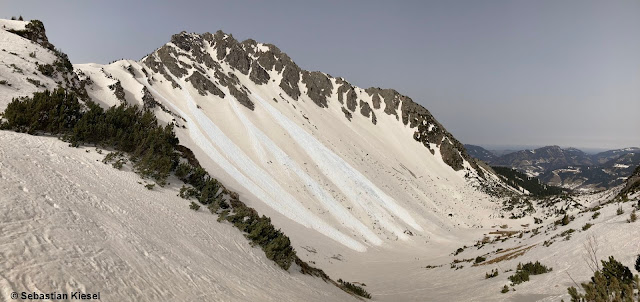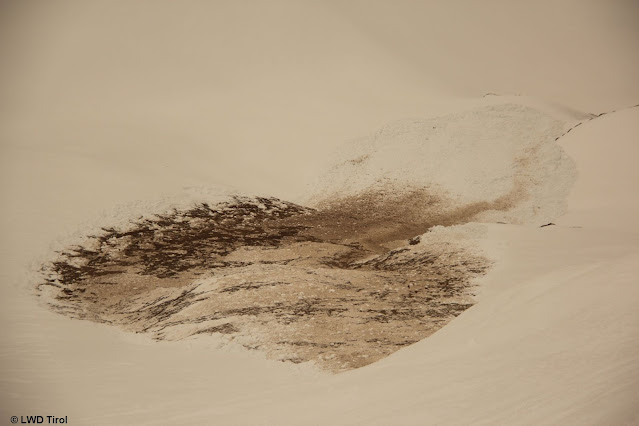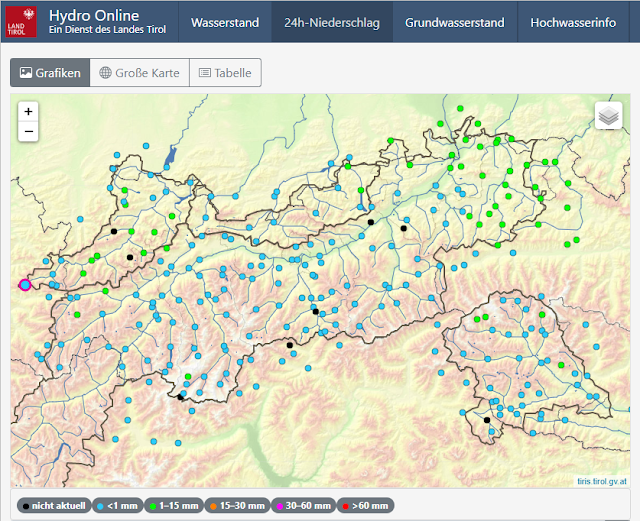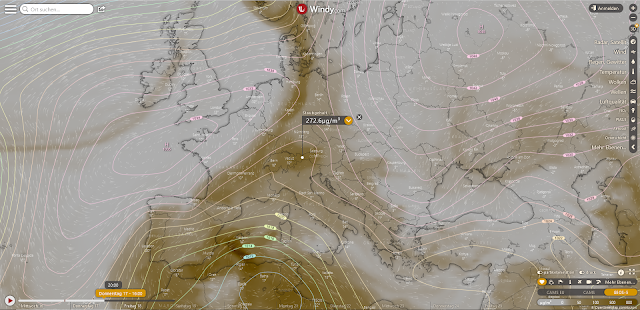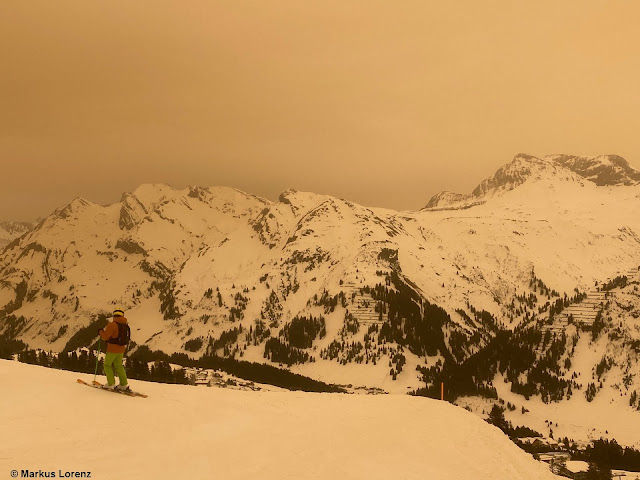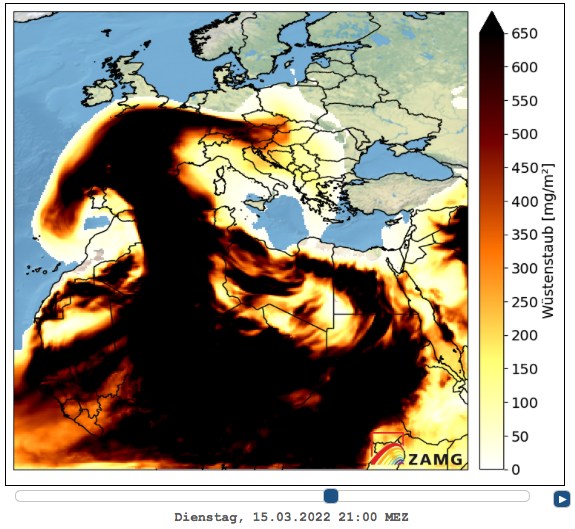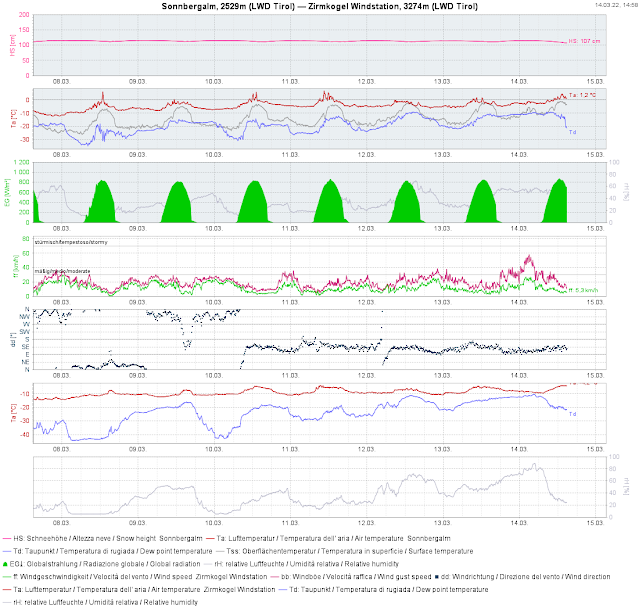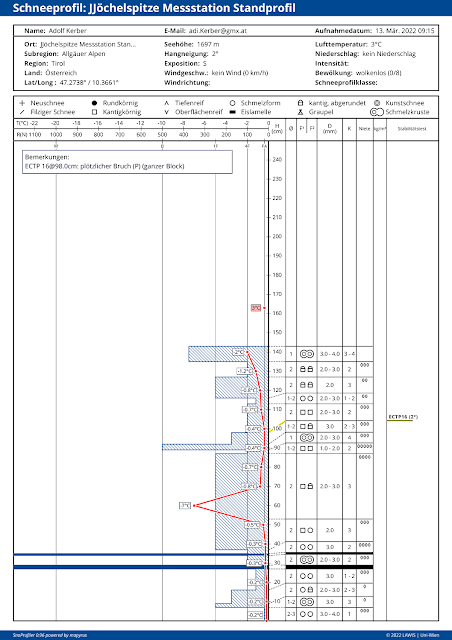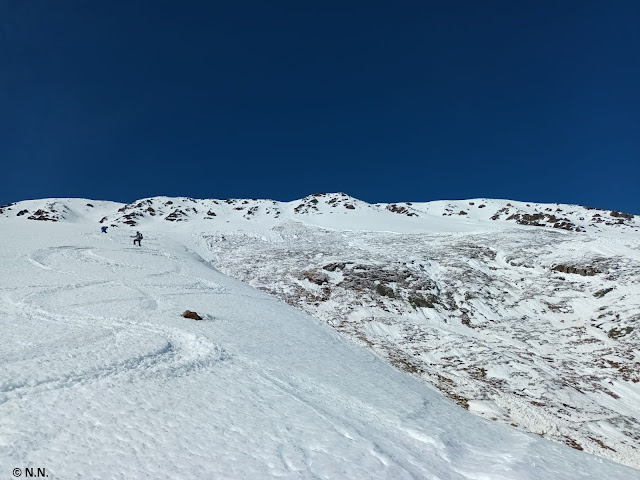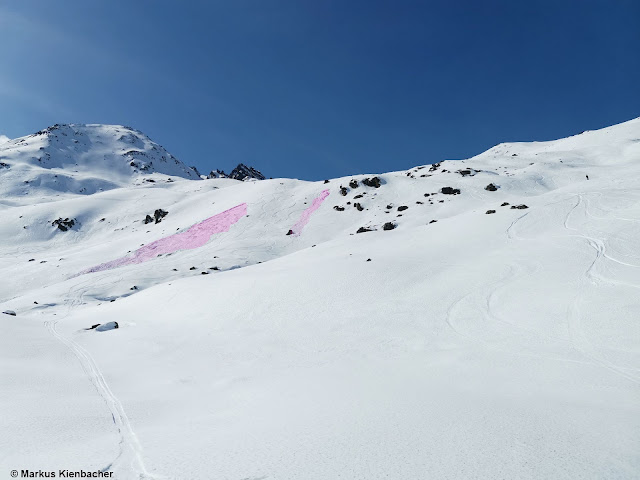Favorable avalanche situation, generally low danger
All week long, extremely steep terrain was skied throughout Tirol without avalanches getting triggered. At the same time, stability tests have shown a snowpack which is low in tensions, highly stable. In short: this is a favorable avalanche situation.
Very few avalanche prone locations
Dry loose-snow avalanches in extremely steep shady terrain
The snowpack surface became expansively metamorphosed to a massive degree during the extended period of beautiful weather. That means it often consists of loose, faceted crystals. In extremely steep terrain the impulse of skiing can threaten loose-snow avalanches. The danger of being swept along outweighs that of being buried in snow masses. Experts refer to “sluff management” in this connection: either you give the loose-snow avalanche enough time to release beneath your track or you take care that you don’t get in the path of the plummeting snow masses.
 |
| A winter sports enthusiast triggered this loose-snow avalanche just prior, during his descent, which did not endanger him. Silvretta (photo: 08.03.2022) |
Moist loose-snow avalanches primarily from the impulse of winter sports enthusiasts
All week long, it was too cool for this juncture of the season. In addition, the air was often very dry. Both these things led to the snowpack on steep sunny slopes becoming only slightly moist during the daytime. Moist loose-snow avalanches thereby occurred, if at all, only later in the day by the impulse of skiers. As a result of slowly rising temperatures during the week, it is becoming more likely that isolated moist slides will trigger naturally in extremely steep terrain during the course of the day.
 |
| A small moist slide in extremely steep south-facing terrain. Ötztal Alps. (photo: 10.03.2022) |
Mostly high-quality snow
As flawless as the snow was at the beginning of last week it no longer is, but generally the snow quality is still high: in flat and generally shady terrain the surface is often loose. On steep sunny slopes the surface is hard-frozen in early morning, then softens up during the day. The joys of firn snow are coming to those zones. In high alpine regions the wind was frequently in play.
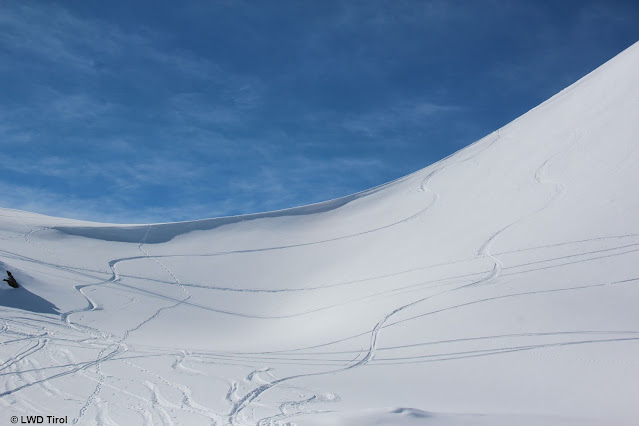 |
Look at the two ski tracks coming from the right: firn on sunny slope, “powder” on shady slope
(photo: 08.03.2022) |
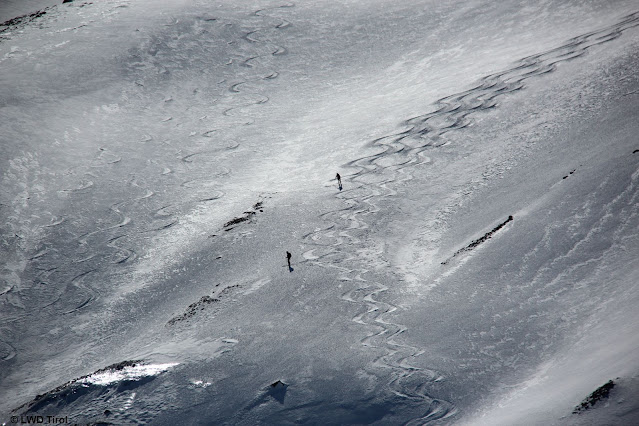 |
| A dream of powder snow. Ötztal Alps (photo: 10.03.2022) |
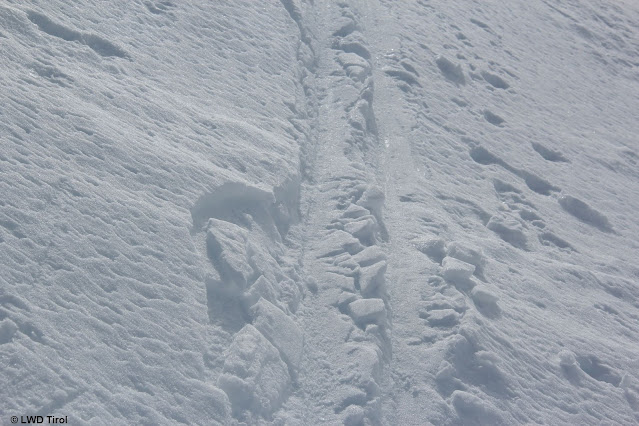 |
| Transition zone with melt-freeze crusts gradually increasing. (photo: 08.03.2022) |
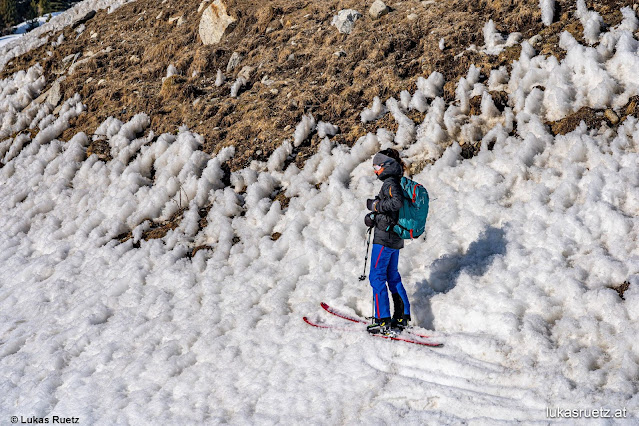 |
| “Ragged snow” forms in springtime when the air is very dry. Sellrain (photo: 06.03.2022) |
Other alpine dangers
Currently, other alpine dangers outweigh those of avalanches. Among these number the danger of slipping on the frozen snowpack which freezes hard during the night, and being forced to take a fall.
We have also received information about cornices breaking. Caution is urged particularly in traversing ridges. But also stopping below a cornice is dangerous.
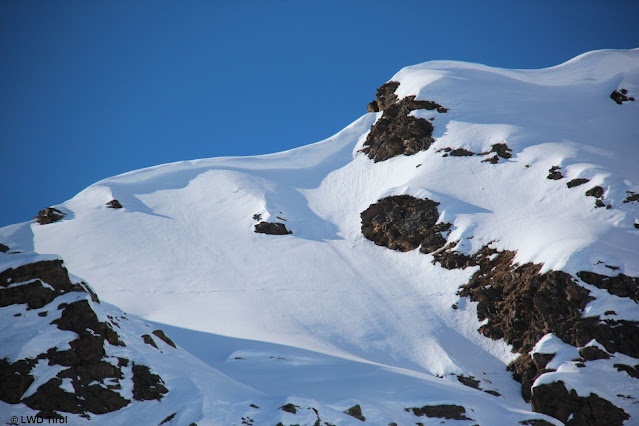 |
| Cornice formation near ridge (photo: 08.03.2022I |
 |
| Danger of slipping atop ice (photo: 10.03.2022) |
Weather review and outlook
To put it into a nutshell: all week long, high-pressure front conditions dominated. Sometimes there was cloud, in the Lower Inn Valley in particular. It will continue. More clouds will be evident over the short term in East Tirol It will remain dry. Temperatures will gradually rise.
 |
| Tirol’s lowlands were at a slight disadvantage at the beginning of last week. Since 08 March, nighttime skies were again star-studded, the air dry. Temperatures are now climbing a bit each day. This trend will continue. The snowpack surface will become moist during the daytime. |
The favorable avalanche situation will persist!


.jpg)
.jpg)
.jpg)
_bearbeitet.jpg)
_bearbeitet.jpg)

.jpg)
.jpg)
.jpg)
.jpg)
.jpg)
.jpg)
.jpg)
.jpg)
.jpg)
.jpg)

_bearbeitet.jpg)

